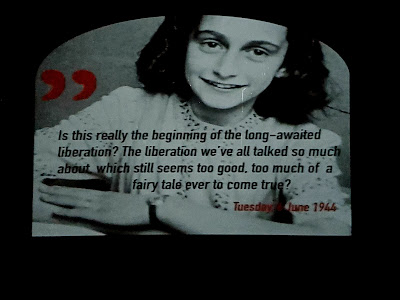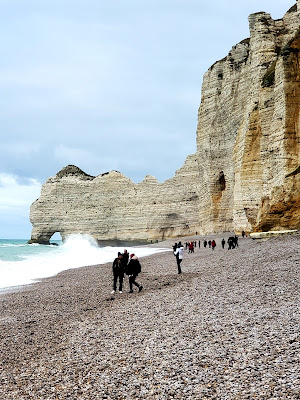***NOTE:
This is the last posting for our river cruise on the Seine River. Start reading at
the beginning of the posts by clicking: The Seine: Paris to Normandy 2021
The suitcases are packed and loaded onto the bus, and as we pull away, the crew is waving goodbye. This was the last voyage of a short season on the Seine River. After finalizing things on the ship, some of the crew will transfer to the Christmas Market cruises and some will head to their homelands and wait the start of the cruising season next spring.
We head toward Paris, where we will spend the night in a hotel close to the airport as we will be flying home in the morning.
But on the way, we will stop at the Peace Memorial in Caen, a state-of-the-art facility that vividly presents the events of World War II, including D-Day.
The museum is located at the site of an important German headquarters during WWII.
There are exhibits that cover the lead-up to WWII and of the war in both Europe and the Pacific.
...accounts of the Holocaust and Nazi-occupied France.
Under the building is a bunker used as the headquarters for German General Richter made crucial decisions about driving the Allies back out to sea from the beaches of Normandy.
And Anne Frank...
Plenty of photos detailing the events of D-Day
Decoys were used to fool the Germans. This is a photo of an inflatable tank positioned near Calais where the Germans thought the Allies would land.
And far away from the actual Normandy beach landings, aircraft would drop parachute dummies, all part of a hoax to confuse the enemy.
There were short movies to watch...
And a wonderful 360 degree cinema displaying images of "Normandy's 100 Days" projected on 9 screens.
We spent several hours in the museum and only saw a portion of it. Tickets purchased are good for two days, as there is so much to take in.
By mid-afternoon we were back on the bus headed to Paris.
It's Sunday and the roads are jammed with traffic as people are returning to the city.The next morning we headed home via CDG airport. The trip was very enjoyable; we did have to follow all the different rules regarding the covid pandemic--proof of being fully vaccinated, negative covid tests when required, passenger locator forms filled out for the airlines, etc., and of course, wearing masks while indoors and using lots of hand sanitizer. Those extra efforts were well worth it to be able to travel abroad again.







































































